Defence and geopolitical experts have been watching issues of development in the Arctic with growing interest and concern. Once a remote area devoid of geopolitical manoeuvering, that is no longer the case
Even with the observed shortening of the winter season and now ice-fee summer passages through the Arctic seas, icebreakers are still critical, and perhaps growing even more so as the world looks to the vast potential resources of oil, natural gas, and minerals in the Arctic and who has sovereignty over them.
Of the Arctic nations, Canada, the United States, Denmark, Iceland, Norway, Sweden, Finland and Russia, it is Russia by far that has been developing its Arctic presence.
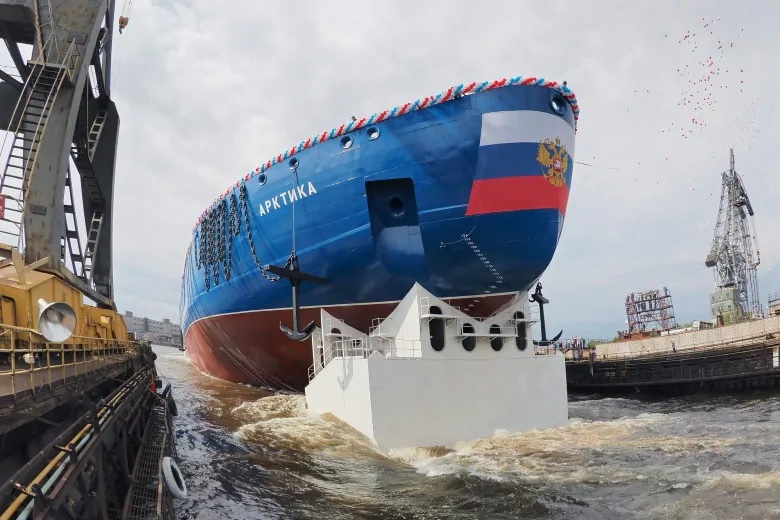
As part of its ambitious plan to enlarges and modernises it’s icebreaking fleet Russia launced the nuclear powered “Arktika” from the Baltic shipyard in St Petersburg in 2016. (AP-Evgeny Uvarov)
Canada Arctic comprises fully 40 per cent of our landmass, at 14 million square kilometres, yet is extremely sparsely populated in a smattering of villages and towns with a total of only 100,000 residents.
Russia meanwhile has been actively building up military resources throughout its region aided by its fleet of icebreakers, by far the largest, most modern,and most powerful of any Arctic nation.
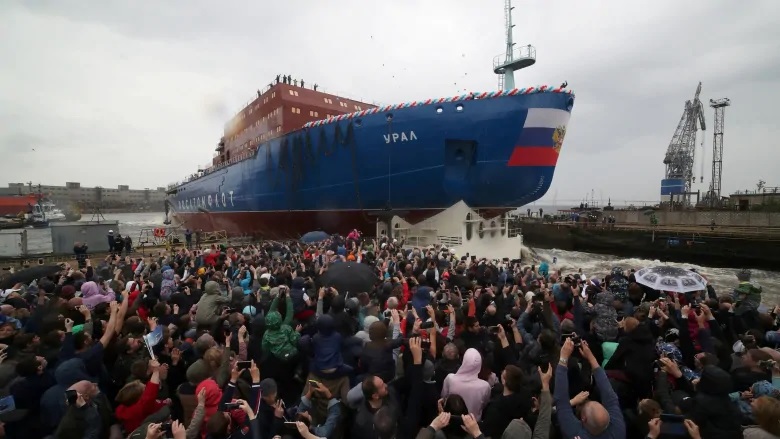
After Arktika, another huge nuclear powered sister ship URAL was launched from the same shipyard in May of this year.(Anton Vaganov-Reuters)
Thanks to its fleet, Russian can now operate a huge liquified natural gas facility year round in the Yamal Peninsula several hundred kilometres north of the Arctic circle.
Russia is also aggressively asserting its control over the Northern Sea Route (NSR) which is developing into an important route between China and Europe.
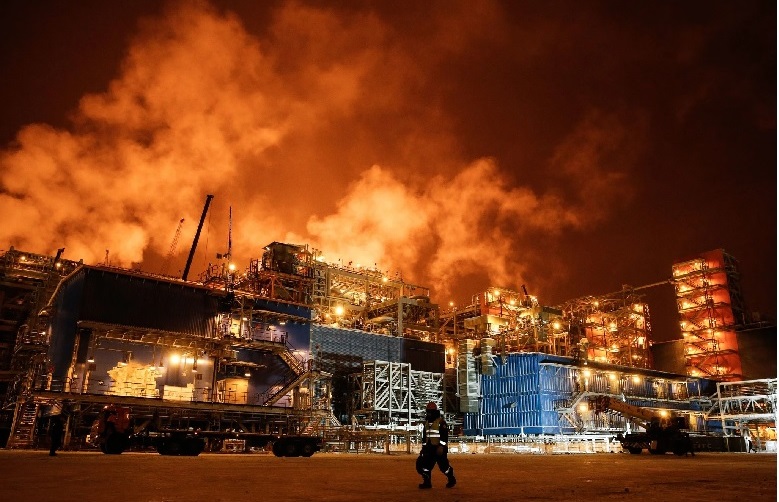
Russia’s huge LNG project on the Yamal Peninsula can operate year round thanks to a fleet of heavy LNG carrying icebreakers. (l Penisula (Maxim Zmeyev-AFP- Getty Images)
Canada’s fleet of icebreakers currently consists of seven, with only two considered “heavy” with 38,000 hp. This compares to Russia’s fleet of five nuclear powered ships of 50,000 and 75,000 hp ships, with five 30,000 hp ships in the works along with new nuclear powered ships one of which will be much wider and with 160,000hp.
The U.S has only the Polar Star dating from the 1970’s at 78,000 hp and the Healy built in 2000, but has plans for three heavy and three medium ships to come.

Although a superpower, the U.S. has only two functioning Arctic icebreakers. Shown is the USCG polar icebreaker/research vessel Healy . (U.S Coast Guard)
Canada could lose legitimacy in the Arctic
According to an article in Global Research, the U.S has sometimes relied on Canadian icebreakers but with a modern more powerful fleet to come throughout the 2020’s, “this would mean that for the first time in decades Canada would face icebreaker inferiority relative to the United States. Given US Secretary of State Pompeo’s recent assertion that Canada’s claims to the Northwest Passage are “illegitimate”, it appears that Canada is about to lose control over its portion of the Arctic to the United States”
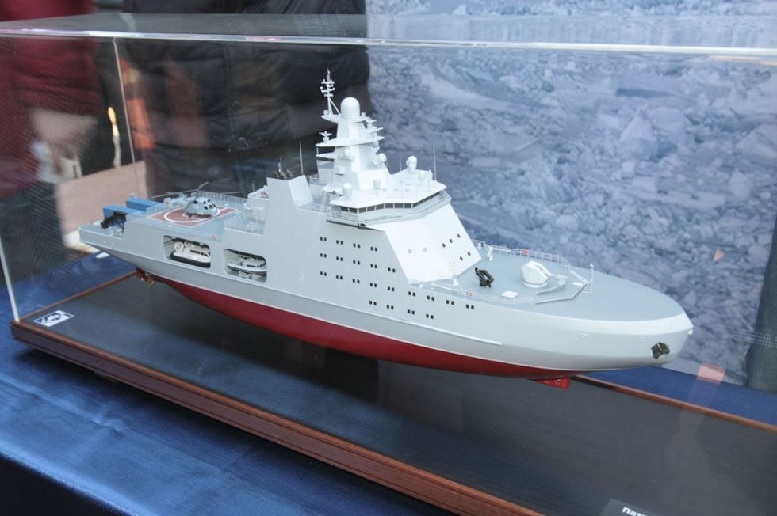
Known as Project 23550, Russia is planning creation of military icebreaking patrol vessels, as part of its power projection plans in the Arctic. (Russian Defence Ministry)
Although much, but not all of the the NSR is in Russia’s exclusive economic zone (EEZ), Russia announced in March that any foreign warships transitting the Northern passage must submit notice 45 days in advance and take a Russian pilot on board, Earlier it had required loadings of coal, oil, and natural gas to Russian-flagged vessels.
Russia also has plans for two military icebreakers with a high level of icebreaking ability and excellent weaponry complex, including missiles, artillery. Russia has also indicated it has authority over the narrow Bering Strait, which puts it into conflict with the U.S, and international law.
Adding to the mix of potential tension in the Arctic is China which is expanding its presence claiming it is a “near Arctic state”.

China is also interested in the Arctic having built a huge icebreaker “Snow Dragon”, shown here in 2012 in Shanghai after an 85 day scientific mission across the Arctic In 2018 China launched a second icebreaker Snow Dragon 2, a class-3 icebreaker and is in the process of building a nuclear-powered ship capable of breaking 3-metre ice and bigger than the Russian nuclear powered Arkitka and Ural (Pei Xin/Xinhua News Agency/Associated Press)
Additional information –sources
- Jamestown Foundation: S Sukhankin: Jun 26/19: Military icebreakers: Russia’s trump card in Arctic?
- Bloomberg: H Brands: Jul30/19: OpEd-America is losing the battle of the Arctic
- Thomson-Reuters (via CBC): May 25/19: Russian launches nuclear icebreaker
- Maritime Executive: Mar 8/19: Russia tightens control over NSR
- NY Times: Sengupta/Myers: May 24/19: Chinas global ambitions: The Arctic
- RCI-CBC: L Sevunts: May 4/19: Pentagon warns of Chinese subs in Arctic
- Global Research-South Front: May 24/19: Icebreakers and Arctic power play
- National Interest: G Upton: Apr 25/19: Power problems, Russia wants control over the Arctic
- Vanguard Magazine: T Pavelic: Aug 29/19: The Push for the Arctic
- The Trumpet: J Jacques: Apr 18/19: Icebreakers: War for the Arctic
- South China Morning Post: L Zhen: Mar 20/19: China’s experimental ship- world’s biggest nuclear icebreaker?
(Note: the original caption for the Chinese icebreaker said it was nuclear-powered. It is in fact diesel powered. The caption was corrected on Sept 4 with additional information about China’s launch of a second icebreaker)
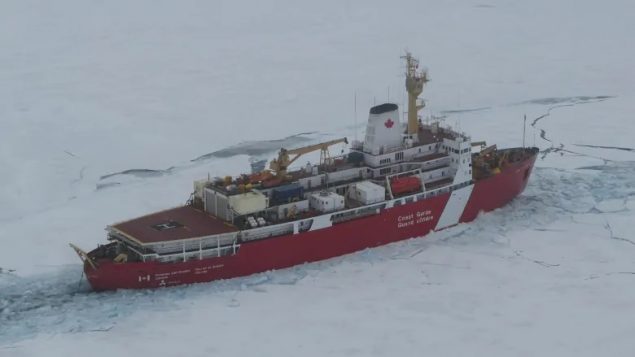






For reasons beyond our control, and for an undetermined period of time, our comment section is now closed. However, our social networks remain open to your contributions.